
Now, years later, I have learned a great deal about our local populations of butterflies and bees as well as what they need to thrive. In this post I hope to share a bit of that information as well as some of the wonderful blooms that are occurring in my garden these days.
But first, I think it is important to share a bit about pollinators and their role in ecology. For this post I am going to focus on butterflies who are key to plant cycles as well as the survival of birds.
The Ecology of Butterflies ~
Have you ever heard the term host plant in association with butterflies? Maybe, if you live in North America, you have heard of a connection between milkweed and the monarch butterflies.
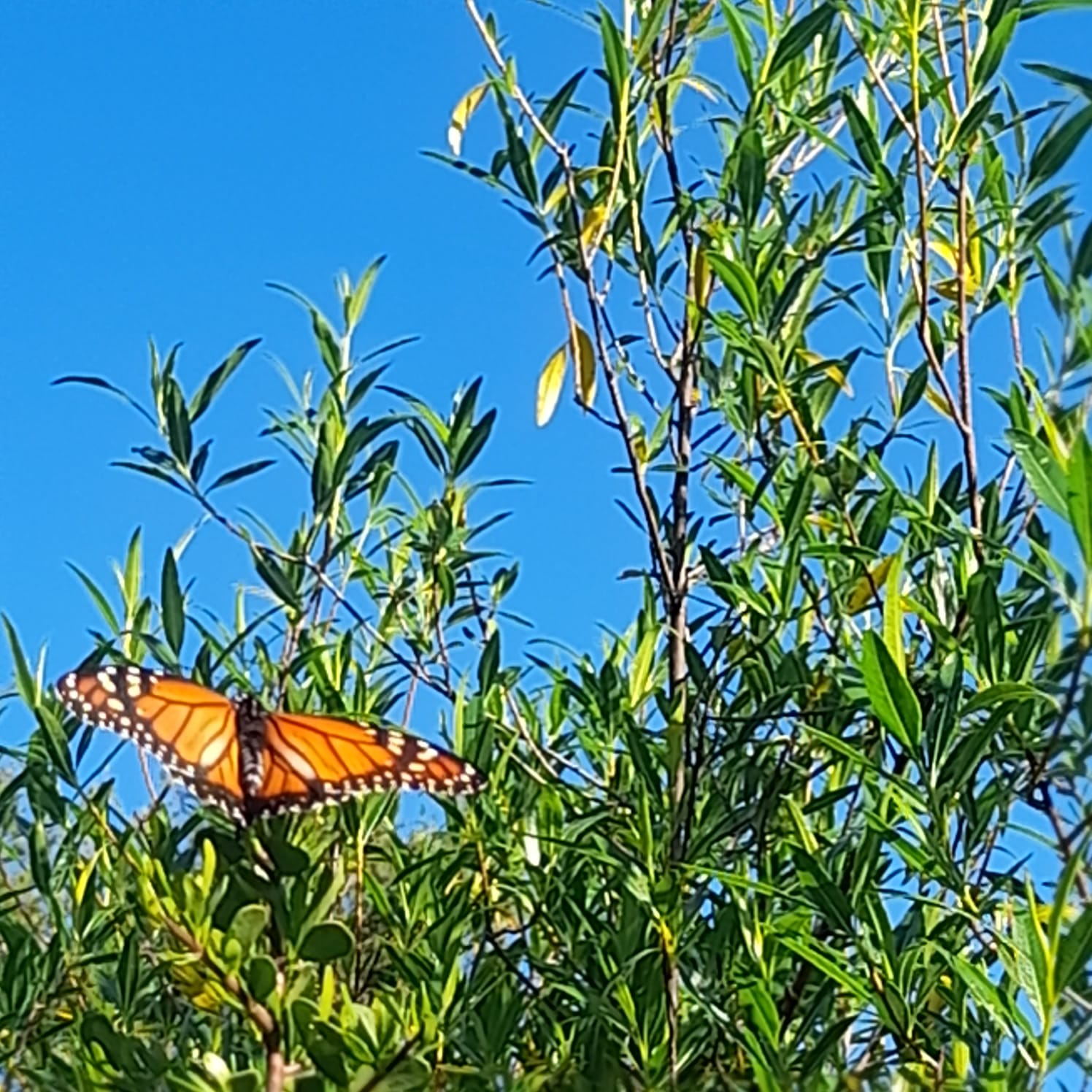
Monarchs absolutely depend on the presence of milkweed plants in order to survive. The family of plants referred to as milkweed are host plants to the monarch butterflies. Female butterflies looking to lay eggs will only deposit their future children on their host plant, this is because the caterpillars that will hatch from the eggs can only consume the leaves and flowers of said host plant.
This is a bit analogous to mammal babies that can only thrive upon their mother's milk, or in recent times formula. A baby horse isn't ready to eat hay right away, a human baby isn't able to digest a banana on day one, or even day 60. While caterpillars are developing they must be close to an abundance of their host plant which is species specific.
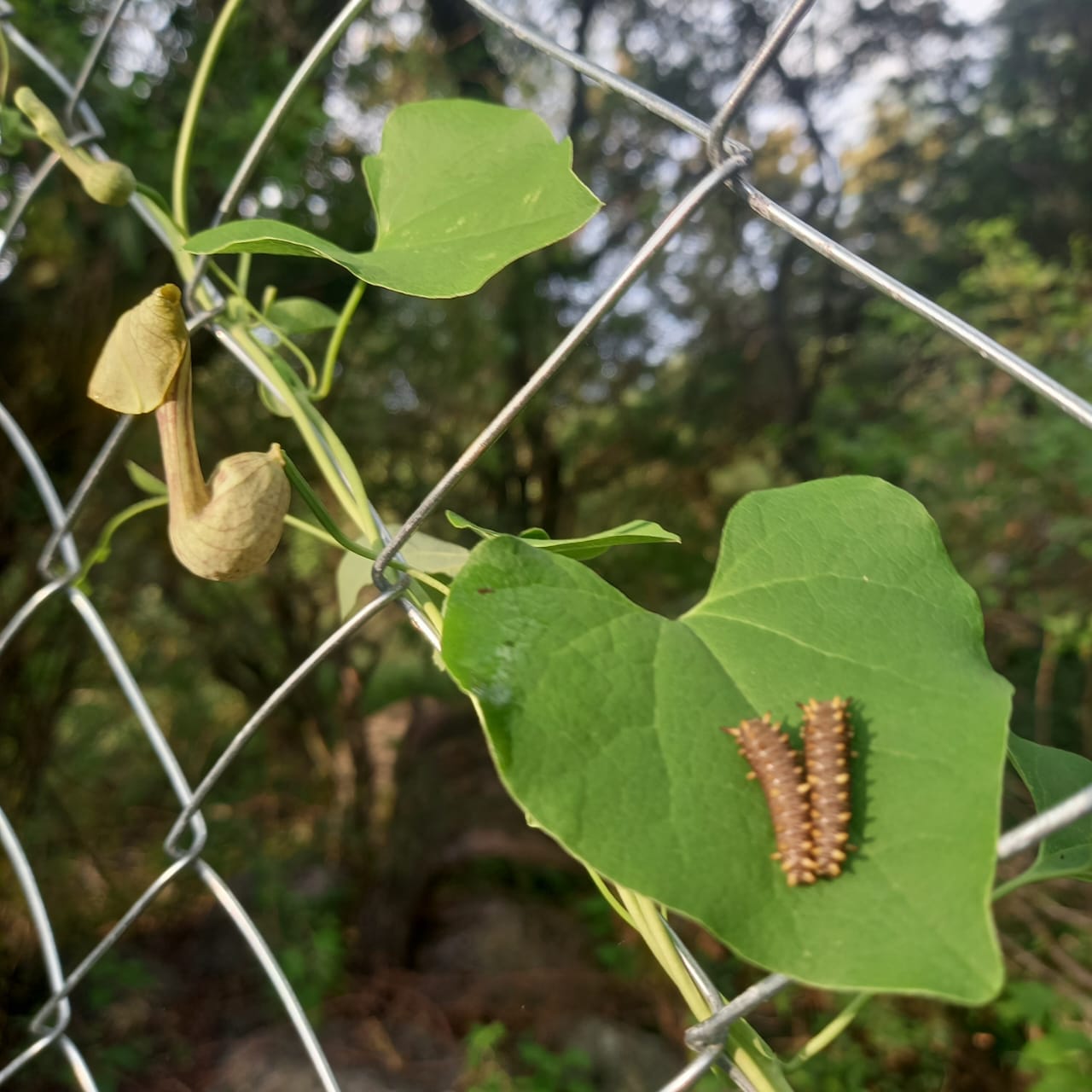
The analogy to mammals doesn't quite work though because mammals and butterflies have totally opposite parenting tactics. While mammals nurture and protect their young butterflies lay hundreds of eggs then move on leaving the caterpillars to hatch and raise themselves. And of these hundreds of offspring many will become food for wildlife, especially birds which is their main contribution to the circle of life.
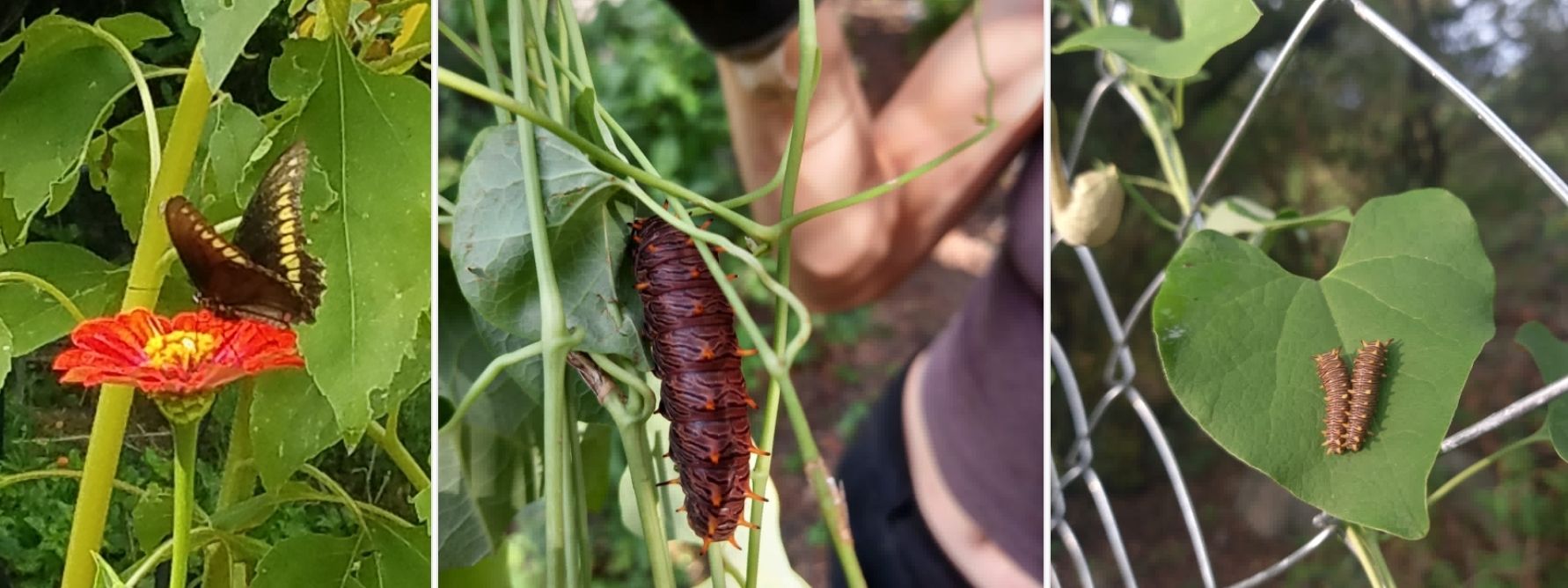
Birds, especially baby birds, rely greatly on worms, caterpillars and other soft-bodied insects and without the availability of host plants butterflies are unable procreate hundreds of caterpillars in their short lives.
The images above capture the various stages of one of my favorite butterflies in our area which is also one of the most common butterflies ~ the Polydamas Swallowtail!

Here in the flower beds you can see a Polydamas Swallowtail on the right sharing a drink with a Gulf Fritilary on the left. Both of these butterflies as well as a variety of medium & large sized butterflies absolutely love zinnia flowers and so I am sure to plant a lot of them each summer.
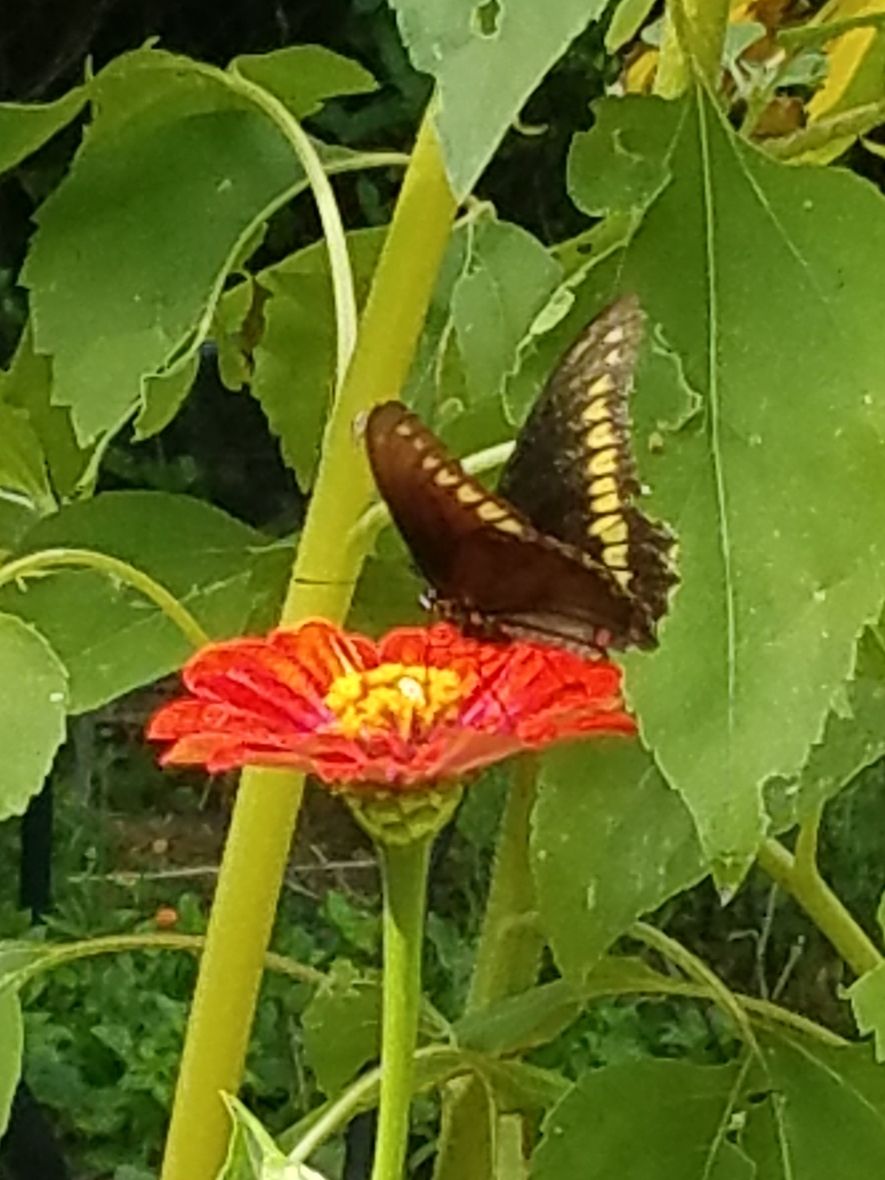
Unlike caterpillars who live on the leaves & flowers of their host plants adult butterflies do not eat solid food and only consume nectar from flowers and water from puddles, shallow streams, and ponds.
Caring for Butterfly Habitat ~
In my small garden I grow sunflowers, zinnias, calendula, borage, and cosmos for the butterflies and bees but it is also important to protect native habitat that grows around the garden and in the wild.
At the moment we are building a small home for ourselves and had to clear a section for the foundation. While doing this task I discovered a few Polydamas Swallowtail caterpillars and their host plant the pipevine. Even though it took a bit of time I relocated all of the caterpillars to another section of the land that will always remain forested and where lots more pipevine is growing undisturbed.
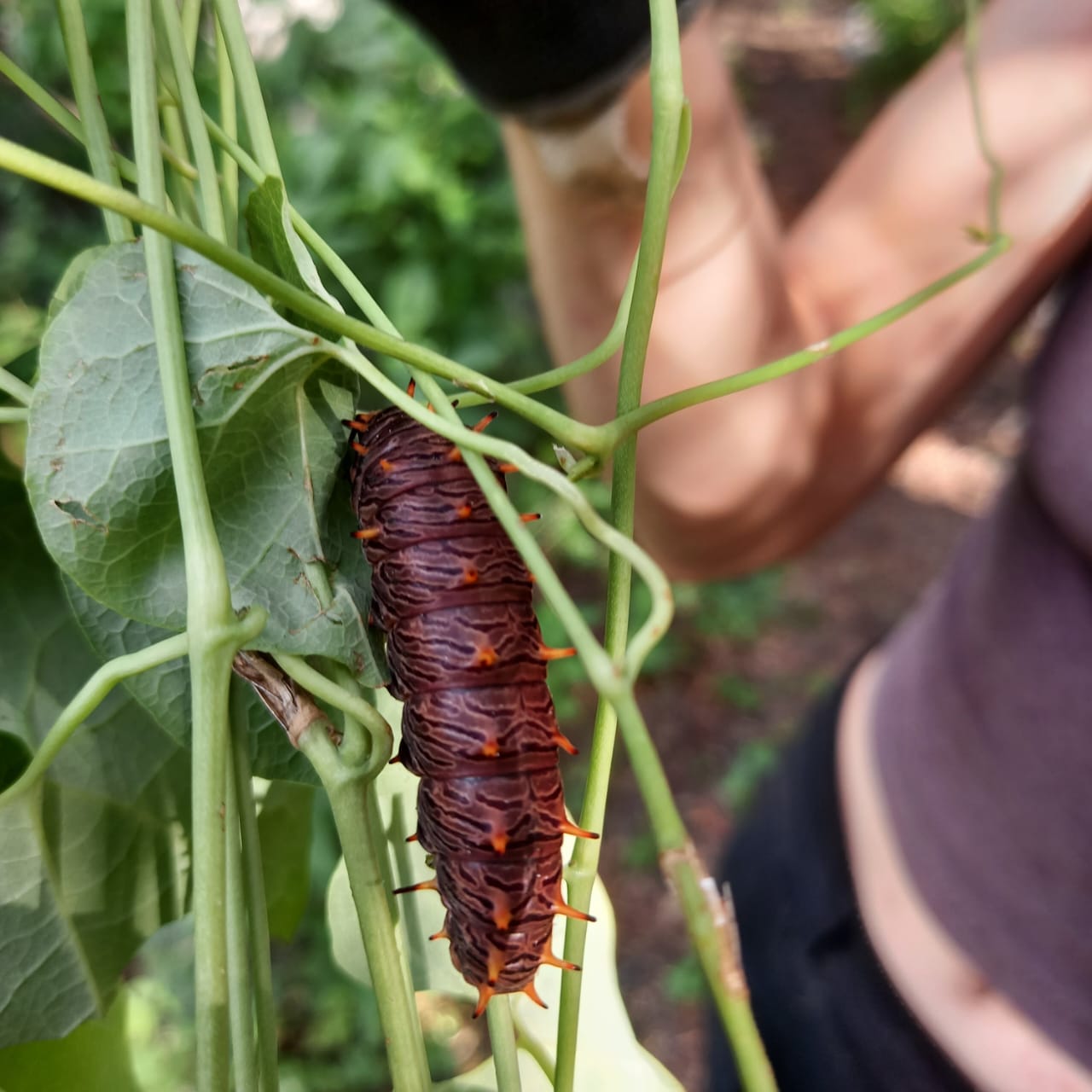
As you can see in this picture I didn't touch the caterpillar directly and instead transported the little creature on a piece of the plant that I had to pull up. Whenever possible this is the best way to go as some caterpillars, especially those with hairs, can be irritating to the skin.
Back to the Garden ~
During these past few years I have noted that certain types of insects have a preference for specific flowers. Zinnias are adored by medium-sized and larger butterflies as the stalk and the flowers make a stable platform from which they can suck nectar out of the tube-shaped flowers. Bees, on the other hand don't seem to flowers that sway in the wind and seem to love smaller flowers such as cosmos and borage.

A native type of bumble bee sips on some cosmos flowers, jumping too and fro as the breeze moves the flowers about. I have also notices that bees of all size are attracted to the giant sunflowers. Contrary to the name, a sunflower is actually made up of dozen, sometimes hundreds of smaller flowers. This makes it easy for a bee large or small to drink tons of nectar and collect lots of pollen in one single location.
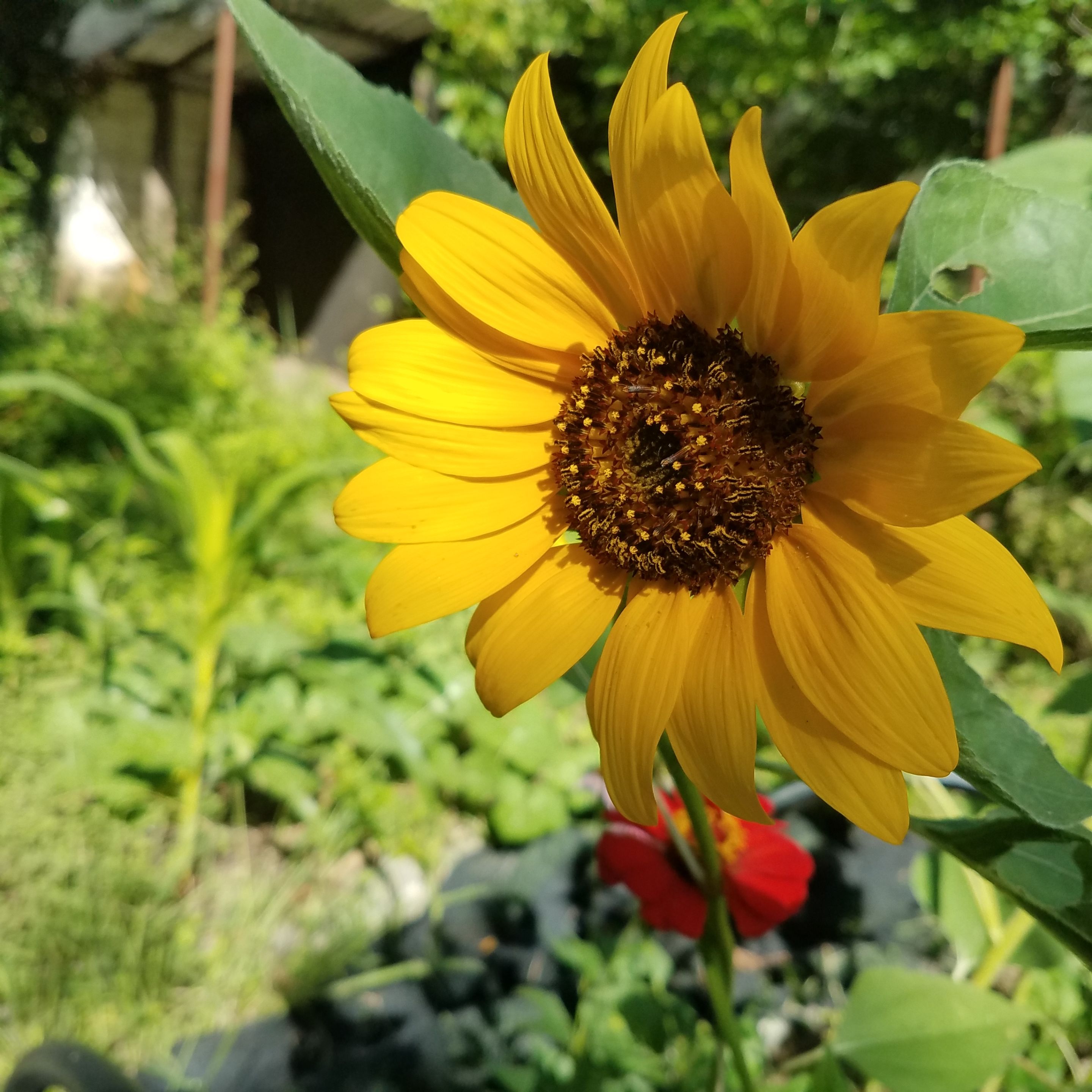
Each day this summer I go out to the garden and see the flower beds abuzz with so much activity. On any sunny day I can count 5 different butterflies and 4 types of bees. My hope is that with time there will be even more species attracted to this patch of land. My role as the gardener and caretaker of this patch is to simply plant the flowers and admire the wildlife that is attracted to them.